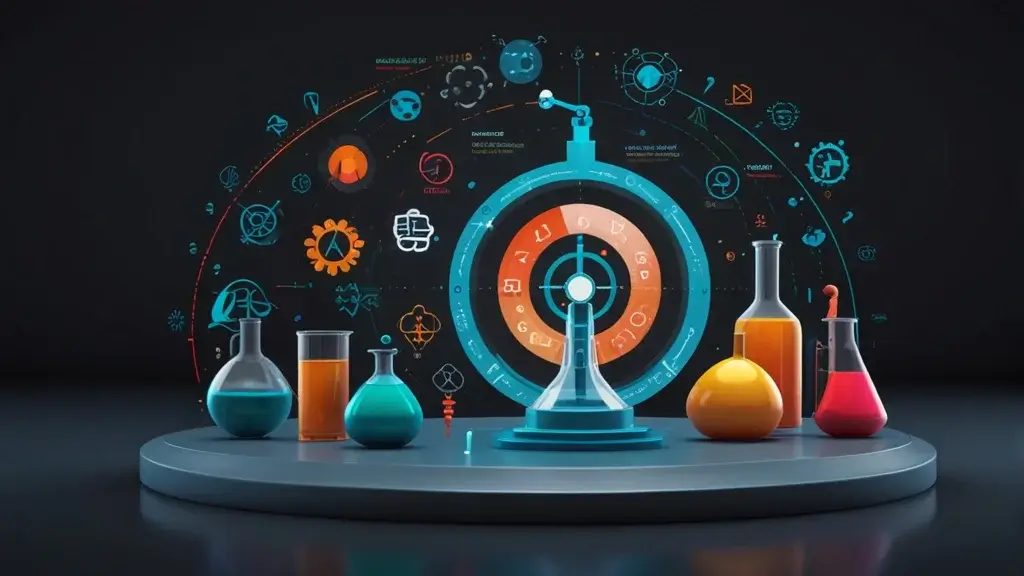Machine-Assisted Research
“Machine-assisted research also known as computer-aided research. It is an effective and well-tested platform/tool that enables researchers to gather high-quality data using mobile phones, tablets, and computers.” Machine-assisted research involves utilizing computer systems and algorithms to assist in the research process.
The research sector has experienced greater advanced form with the incorporation of computer-assisted research tools. These technologies enable researchers to efficiently collect, store, and evaluate research data. Research organizations, medical institutions, and educational establishments routinely utilize various computer-assisted research modules.
These encompass online research methods such as questionnaires, forums, and webinars, which may also be classified as computer-assisted research tools. Computer-aided telephone interviewing (CATI) refers to the use of computer systems to conduct telephone surveys. These systems also have the capability to capture and preserve data collected from live research groups.
Types of Machine-Assisted Research
Internet-based Research
The Internet is the primary platform for computer-assisted study. Web-based apps enable researchers to reach a wide range of potential participants for conducting additional investigations on the behaviors, attitudes, beliefs, and experiences of individuals worldwide. Data may be collected using web forms, informative surveys, seminars, and online forums.
Computer-aided Telephone Interviewing
Another form of computer-assisted research is the integration of traditional telephone research with a computerized system. A CATI system is the generally used term for this. The CATI system enables telephone researchers to deliver computer-guided scripts to applicants and save this data in a centralized database. The information might range from fundamental demographic data to comprehensive notes recorded by researchers during live telephone interviews.
Cameras and Digital Recording

Computer-assisted research incorporates closed-circuit cameras and digital recording equipment to automatically capture and document material collected during a study group session. Rather of relying on human note-taking, the computer-assisted research system captures study participants’ statements in a non-intrusive manner, enabling researchers to utilize this data for reporting and data analysis.
The captured facial expressions and behavior of participants can provide insights into how individuals respond to specific stimuli within a study environment.
Advantages of Machine-Assisted Research
This strategy utilizes technology to improve many aspects of study, hence increasing efficiency, precision, and comprehensiveness. Below are a few essential elements and advantages of machine-assisted research:
Data Collection and Processing
Machines have the ability to efficiently collect and process substantial amounts of data from diverse sources, therefore reducing the time and effort required by researchers.
Data Analysis
Modern algorithms, such as those used in machine learning and artificial intelligence, have the capability to recognize complex patterns, trends, and connections in data that may be challenging for people to find by manual means.
Simulation and Modeling
It involves the use of computer models to replicate complex structures or situations, enabling researchers to investigate hypotheses and forecast results without the necessity of doing real experiments.
Review of Literature
Automated technologies can assist researchers in locating relevant literature, summarizing results, and even deriving insights from the analysis of current articles.
Experimentation
Automation and robots may be utilized in laboratories to carry out tests with accuracy and uniformity, reducing the occurrence of human mistakes.
Cooperation and Interaction
Cooperation and Interaction are enhanced by digital platforms and technologies, which allow researchers in different places to readily exchange data and discoveries.
Publication and Presentation
Machine-assisted technologies can aid in the composition, arrangement, and publication of research articles, as well as in the distribution of results to a broader audience.
Benefits for Literary Studies

Thematic Analysis
Machine learning algorithms may be utilized to do thematic and sentiment analysis on extensive amounts of text. This enables researchers to get insights into the underlying meanings and emotions conveyed in literary works by identifying themes, motifs, and moods.
Stylistic and Structural Analysis
Tools can examine an author’s style, including their word selection, sentence construction, and utilization of literary techniques. This analysis can offer valuable insights into the author’s distinct voice and artistic approach.
Extensive Data Analysis
Utilizing digital technologies, academics may do large-scale data analysis on extensive collections of texts, therefore uncovering trends, patterns, and changes in literature across history. The method referred to as remote reading enables the examination of literary history on a larger scope compared to the traditional practice of close reading.
Comparative Analysis
Scholars have the ability to examine and contrast works from other authors, genres, or time periods in order to recognize parallels and contrasts. This process provides fresh insights into literary movements and influences.
Style Recognition
Machine-assisted approaches can utilize style and pattern recognition to determine the authors of anonymous or contested works. This can be beneficial for literary history and research.
Digital Archives
Machine-assisted research enables the development and maintenance of digital archives of literary works, expanding their accessibility to a broader audience and ensuring their preservation for future scholarly investigation.
Sociolinguistics
It involves the use of machine-assisted technologies to analyze language in various social situations such as social media, interviews, and conversations. This analysis helps to examine the diversity and changes in language throughout time.
In short, machine-assisted research significantly boosts the capacities of human researchers, allowing them to address complex challenges with more effectiveness and efficiency. Although not all research companies employ computer-assisted research tools, a significant number are integrating conventional research methods with contemporary technology to provide more precise findings.






